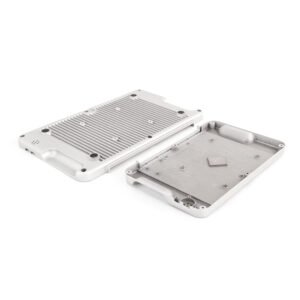Electronic parts
One-stop Solution
Advanced Equipment

CNC machining centre (6.5m lengths)
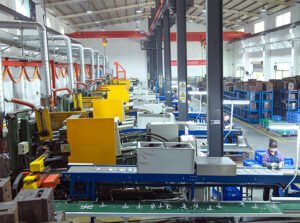
Automatic die-casting equipment
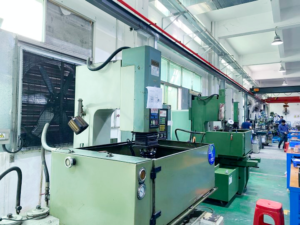
EDM

Wire Cut Machine
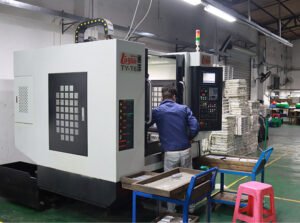
4-axis machining centres
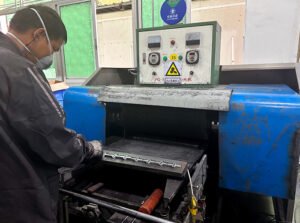
Automatic grinding
Professional Team
Professional engineers review die castings and machined parts for each project and provide DFM reports. We can help reduce costs, avoid high modification fees at later stages, and minimize defects and defect rates.

Common electronic components produced using die casting
Die casting is a manufacturing process widely used in the electronics industry, especially for producing high-precision, high-strength metal parts. The following are some common electronic components produced using die casting:
1. Heat sink
Used in computers, LED lights, power amplifiers and other equipment, usually made of aluminum alloy die casting to improve heat dissipation performance.
2. Mobile phone and laptop housing
The body of many high-end smartphones and laptops is made of die-cast aluminum or magnesium alloy, which has the characteristics of light weight and high strength.
3. Connector Housing for electronic devices
Mainly used for cable connectors, automotive electronic interfaces, industrial equipment connectors, etc., using zinc alloy or aluminum alloy die casting to ensure durability and conductivity.
4. Motor Housing
Small motors, stepper motors, fan motors, etc. in electronic products usually use die-cast aluminum or magnesium alloy housings to improve strength and heat dissipation capabilities.
5. Wireless charging base
High-end wireless chargers use die-cast aluminum alloy housings to provide better heat dissipation and enhance the overall appearance texture.
6. LED lamp housing
The housings of many LED driver power supplies, LED floodlights, etc. are made of die-cast aluminum to ensure structural strength and improve heat dissipation.
7. Electronic instrument housing
The housings of various industrial electronic equipment, medical instruments, etc. are made of die-cast aluminum or magnesium alloy to provide solid protection and meet electromagnetic shielding requirements.
8. UAV parts/ Drone parts
The frames, housings, gimbal brackets, etc. of drones are usually made of magnesium alloy or aluminum alloy die-casting to achieve light weight and high strength.
9. Automotive electronic parts
Electronic control unit (ECU) housings, battery management system (BMS) housings, sensor housings, etc. are usually made of aluminum alloy or zinc alloy die-casting.
10. Power adapter housing
Some high-end power adapters use die-cast aluminum alloy housings to improve heat dissipation performance and durability.
Die-casting technology is increasingly used in the electronics industry, especially in parts that require high strength, light weight and high thermal conductivity, aluminum alloy and magnesium alloy die-casting have become the preferred materials.
What are the advantages of using die casting to produce electronic components?
The advantages of using Die Casting to produce electronic components are as follows:
1. High precision and complex shapes
Die casting can produce high-precision and high-complexity electronic components, reduce the need for subsequent processing, and improve assembly accuracy.
Thin-walled and fine-structured designs can be achieved, suitable for compact electronic devices.
2. Good thermal conductivity and heat dissipation performance
Die casting materials such as aluminum alloys and zinc alloys have excellent thermal conductivity, which enables electronic components to have efficient heat dissipation capabilities, especially suitable for products such as LED heat sinks and electronic equipment housings.
3. High strength and durability
Die castings have good mechanical strength and corrosion resistance, and are more resistant to impact and aging than plastics, suitable for long-term use of electronic products.
4. Dimensional stability and consistency
The die casting process ensures that the dimensions of each component are highly consistent during mass production, reduces errors, and improves the assembly efficiency of electronic components.
5. High production efficiency, suitable for mass production
One-time molding and short cycle time are suitable for large-scale production, which helps to reduce production costs.
6. Excellent electromagnetic shielding performance
Metal die-castings (such as aluminum alloys and zinc alloys) can effectively shield electromagnetic interference (EMI) and are suitable for electronic communication equipment housings, such as mobile phones, wireless devices, computer housings, etc.
7. Rich surface treatment options
Die-castings can be subjected to a variety of surface treatments such as anodizing, electroplating, spraying, sandblasting, etc. to meet the appearance and functional requirements of different electronic products.
8. Environmental protection and recyclable materials
Die-casting materials such as aluminum alloys and zinc alloys can be recycled and reused, meet green manufacturing requirements, and reduce material waste.
Applicable electronic products
- Heat sinks
- Power supply housing, motor housing
- 5G base station components, communication equipment housing
- Laptops, smart phones metal housings
- Automotive electronic components (such as control module housings)
On the whole, die-casting technology has obvious application advantages in the field of electronic products, especially for products with high precision, high strength, good heat dissipation and electromagnetic shielding requirements.
Get Immediate One-On-One Service
Welcome Friends And Customers At Home And Abroad To Cooperate Sincerely And Create Brilliance Together!



